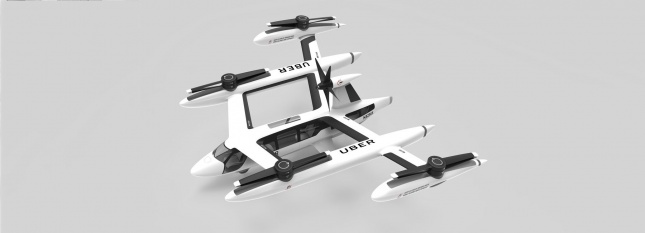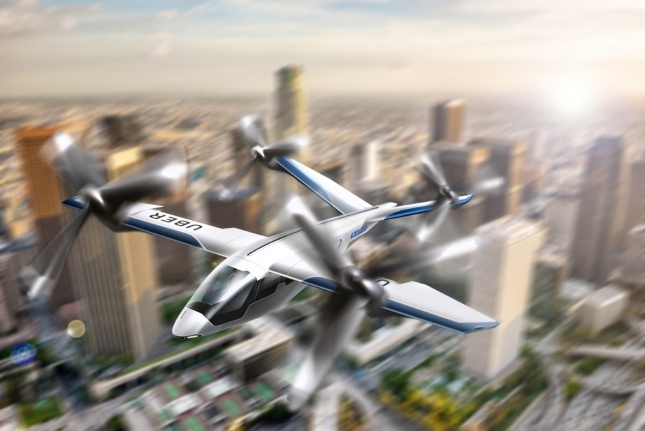Uber’s flying taxi service is one step closer to getting off the ground after the ride-sharing company unveiled its latest flying car concept at their second annual Elevate conference in Los Angeles. The final design isn’t set in stone, but this new prototype is a template for the company’s five manufacturing partners to build off of.
Elevate, also the name of Uber’s flying taxi business, wants to let passengers hail a flying car via app and hop from one rooftop sky port to another. Designing a quiet, electric urban helicopter is no small technical feat, and Uber’s latest proposal shows something of a cross between a jet, drone, and helicopter that’s capable of vertical takeoffs and landings (eVTOL). The shuttles will seat four, though they’ll have to be autonomously driven for Uber to make a profit; otherwise two of the seats would go towards a pilot and co-pilot. To make the trips affordable, Elevate will introduce a model similar to Uber Pool, where customers can share a ride that’s going in the same direction and split the cost.

Elevate expects its flying cars to hover around 1,000 to 2,000 feet off the ground and travel at 150- to 200-miles-per-hour, and has thrown out several reference models for its aerospace partners, Karem, Embraer, Pipistrel, Aurora Flight, and Bell as platforms to build off of. The latest model, first shown yesterday, would use four sets of stacked rotors for vertical lift and a tail-mounted rotor for thrust.
Karem, the latest company to join Elevate, wants to build a working prototype of its eVTOL by 2020 and put them into commercial use by 2023. It might seem ambitious, but it’s a target that Elevate’s other partners are also aiming for.

The infrastructure hurdle is another significant challenge that Uber will have to overcome if it really wants to make this system a reality. Besides having to actually develop software for the autonomously flying shuttles (something Uber has struggled with on the ground), the sky ports themselves and an unmanned air traffic control system will need to be built out. Elevate will be getting a bit of a boost in that department, as the company recently teamed up with NASA and the US Army to bring its ridesharing dreams to the sky.












